Unlock the power of Machinery Criticality Analysis to boost reliability and minimize downtime. Explore key concepts like the Reliability-Risk Connection and Overall Machine Criticality.
In the field of industrial maintenance, it is critical to ensure the efficiency and reliability of machinery. Machine criticality analysis is a useful technique for accomplishing this. In the long run, this procedure minimizes downtime and maximizes resources by enabling maintenance personnel to concentrate their attention on the most important assets. In this article, we will explore the different ways to enhance reliability and improve the quality of maintenance according to Machinery Lubrication.
Reliability is a critical factor in any machine, it affects potential outcomes, including missed output, expensive repairs, and even fatalities. Risk-based choices should be taken into consideration to increase reliability and improve the quality of maintenance. Categorizing activities according to their ROI can assist in determining which machines provide substantial returns.
Understanding machine criticality and risk profile allows for customized improvements. The Pareto principle suggests that 20% of machines cause 80% of reliability problems. Pay close attention to lubrication and precision maintenance to detect this equipment. Additionally, address the reasons behind failure by making prudent, risk-aware decisions. By understanding machine criticality and risk profiles, businesses can work smarter to customize improvements and minimize the impact of machine failures.
What is Machinery Criticality Analysis?
Machinery criticality analysis is a systematic approach used to evaluate and rank equipment based on its impact on production, safety, and costs. By identifying which machines are most critical, organizations can allocate their maintenance resources more effectively, ensuring that the most important assets receive the attention they need to remain operational.
Understand the Reliability-Risk Connection
As observed in commercial aviation, the probability of a machine failing must be inversely proportional to the level of risk. Considering the severity of failure, the possibility must be negligible as well. Risk and criticality can be used by reliability maintainers to create a comprehensive strategy for lubrication-enabled machine dependability. They also have significant control over the chance of failure. That is this aspect's main focus.
First, let's review several common decisions related to lubrication and oil analysis (all ORS features) that can be tailored (optimal) by knowing the failure modes and machine criticality:
- Lubricant selection, e.g., premium vs. economy-formulated lubricants
- Filtration, including things such as filter quality, pore size, capture efficiency, location and flow rate
- Lubricant preventive maintenance (daily PMs) and inspection strategy
- Lubricant delivery method selection and use (e.g., circulating, auto-lube, mist, etc.)
- Oil analysis (which machines are included and which are not?)
- Oil sampling frequency (weekly, monthly, quarterly, never)
- Laboratory and test slate selection
- Oil analysis alarms and limits
Criticality plays a vital role in the Optimal Reference State's decision-making processes. It has proven difficult to put a value on criticality that is specific to tribology and machine lubrication. Some machinery types do not usually handle the special problems and criticality-related challenges that these fields have.
Calculating Overall Machine Criticality
An evaluation of a risk profile that can be reduced to a single number is called Overall Machine Criticality (OMC). The OMC is what you want to be aware of and in control of. The danger decreases with a lower OMC. The OMC is calculated by multiplying the Failure Occurrence Factor (FOF) by the Machine Criticality Factor (MCF).
While the FOF is related to the probability of machine failure, the MCF is concerned with the effects of failure. It combines both mission-critical and maintenance costs. It is significantly more manageable because this chance is heavily impacted by lubrication and maintenance procedures.
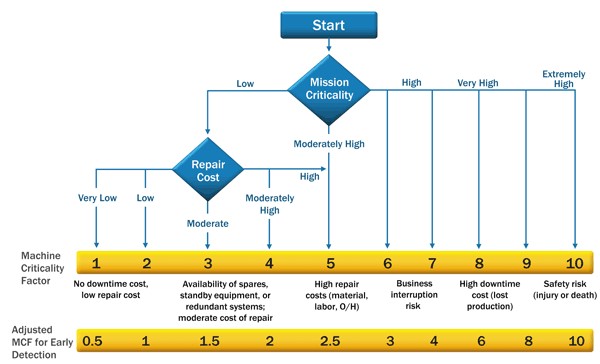
Figure 1: Machine Criticality Factor (MCF) (Relates to the consequences of machine failure)
Image Source: Machinery Lubrication
Machine Criticality Factor
The danger of a machine failing can be calculated using the Machine Criticality Factor (MCF). On a scale of 1 to 10, 10 indicates extreme criticality. The MCF is based on mission criticality. This refers to the risk of sudden and prolonged failure of a machine. There could be significant production losses as a result of high mission criticality. High repair expenses could still be present even in the event of little company disruption or safety risk. These technologies do not lessen the potentially millions-of-dollar cost of repairs, even in the case of redundant or standby equipment.
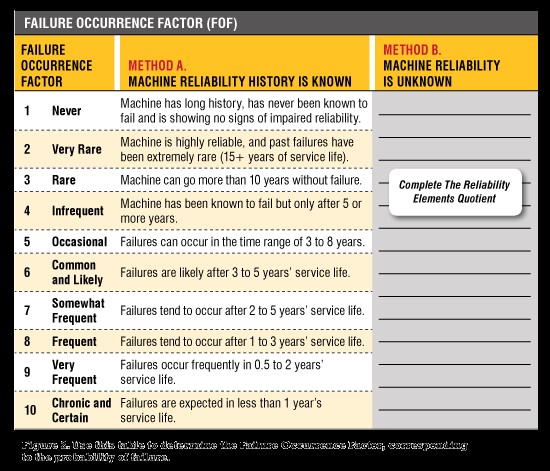
Figure 2: The Failure Occurrence Factor can be found using this table, corresponding to the probability of failure.
Image Source: Machinery Lubrication
Early detection techniques can significantly save machine downtime and repair costs. Examples of these technologies include motor current, proximity probes, oil analysis, vibration analysis, bearing metal temperatures, and motor analysis. As long as there are reliable early warning systems in place, these technologies can be used to identify imminent failure occurrences and lower the Machine Criticality Factor.
Failure Occurrence Factor
A machine's failure history or statistical analysis are used to generate the Failure Occurrence Factor (FOF). It is a measure of the probability of a machine failure. High FOF levels signify severe and long-term ailments. In case that machine reliability is known, utilize the "Machine Reliability History is Known" heading's descriptive rating scheme (Method A). If there is uncertainty or lack of understanding on reliability, utilize Method B's Reliability Elements Quotient (REQ) to identify the causes and controls of lubricated machine failure. This system demonstrates the basic approach to maximize machine reliability.
Reliability Elements Quotient
Five essential components are added up by the REQ (Figure 3) to provide a unique composite score that is utilized for the FOF in Figure 2. It delves deeply into the specific factors that influence the probability of a machine malfunctioning. Let's discuss each of these components, going down to the top.
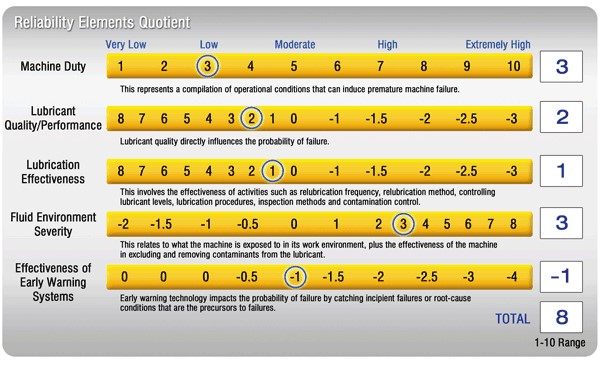
Figure 3. An example of a pre-ORS Reliability Elements Quotient.
Image Source: Machinery Lubrication
- Machine Duty - Machine duty refers to the conditions that can cause premature machine failure. It includes running at or beyond rated loads, operating at high pressure, running at high speed, being exposed to high shock loads or duty cycles, and having similar mechanical conditions.
- Lubricant Quality/Performance – Selecting the right lubricant can prolong your machine lifespan while poor lubricant selection can shorten it. Good lubricants not only minimize wear and friction but also shield the machinery against rust, air entrainment, deposit accumulation, and lubricant famine. Thus, the probability of failure is directly influenced by the quality of the lubricant. You can check our previous blog “Factors to Consider When Selecting Lubricant” to guide you on choosing the correct lubricant for your machines.
- Lubricant Effectiveness - Improper lubrication causes more machine failures than poor lubricants. A wide range of tasks and circumstances are related to lubrication. This includes contamination control, lubricant level control, inspection techniques, and frequency and method of relubrication. The difference between proper and ineffective lubrication is significant for the majority of plants. Master the 'Rs' of Machine Lubrication to ensure the smooth operation and longevity of critical components.
- Fluid Environment Severity - The majority of this has to do with pollution management. The lubricant's quality and condition are jeopardized by contamination. It has to do with the things the machine is exposed to at work (and how severe those exposures are), as well as how well the machine filters out and eliminates impurities from the lubricant. The fluid environment severity of machines is high when they are subjected to a lot of dirt, water, corrosive materials, ambient heat or cold, and process chemicals.
- Early Warning Systems - The possibility of failure is also impacted by early warning technology. This is achieved by identifying early warning signs of failures, often known as root-cause conditions. A variety of issues can be detected early on thanks to oil analysis and thorough daily machine inspections.
- All five elements are counted on a scorecard known as the Reliability Elements Quotient (REQ). This ranges from extremely low to highly high. Each element results in a different numerical scale. Writing down each factor's allocated score in a box and circling it is the most effective approach. A high failure probability is indicated by a total score, such as 8 in the example.
Overall Machine Criticality Matrix and De-Risking Your Plant
The OMC is a matrix with five risk zones, represented by red, amber, yellow, green, and blue. The OMC value is displayed in the intersecting box after being multiplied by the MCF and FOF. Red denotes the highest risk, whereas amber, yellow, green, and blue stand for low risk. These zones can have their locations altered.
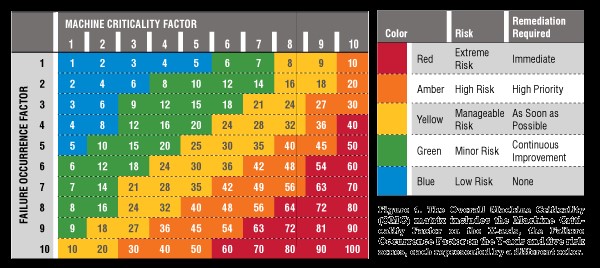
Figure 4. The Overall Machine Criticality (OMC) matrix includes the Machine Criticality Factor on the X axis, the Failure Occurrence Factor on the Y-axis and five risk zones, each represented by a different color.
Image Source: Machinery Lubrication
Equipment that is found in the red or amber zones needs to be fixed right away. The easiest way to accomplish this is to reduce risk values from one or more of the four FOF subcomponents known as "addressable" reliability elements (see Figure 3). These are early warning system efficacy, fluid environment severity, lubricant quality and performance, and lubrication effectiveness.

Figure 5. This table shows how the ORS performance attributes directly influence the elements in the Reliability Elements Quotient (REQ).
Image Source: Machinery Lubrication
This is the Optimal Reference State's exact goal. The relationship between important ORS performance factors and the addressable reliability components, which in turn affect overall machine criticality, is depicted in Figure 5. Everything is connected.
Improvements to the ORS attribute can also be prioritized using failure modes and effects analysis (FMEA). For further information, see the FMEA Process for Lubrication Failures.
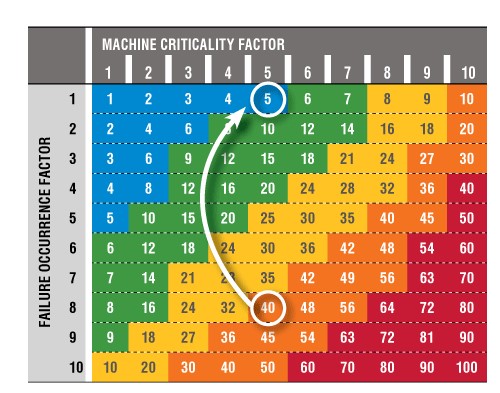
Figure 6. This OMC matrix illustrates how improvements in lubricant selection, lubrication methods, contamination control and oil analysis brought a machine’s risk profile down from 40 to 5.
Image Source: Machinery Lubrication
Enhancing the OMC through improved performance features such equipment, lubricant choice, personnel abilities, and process is the goal of reliability projects. It is possible to attain the lowest risk profile or OMC at the lowest feasible cost by optimizing the modification master plan using criticality analysis and FMEA. For instance, the Failure Occurrence Factor can be raised from 8 to 1 by altering lubricant choice, lubrication techniques, contaminant management, and oil analysis.
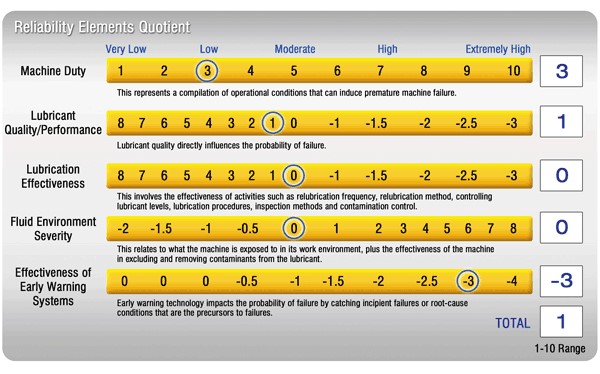
Figure 7. This post-ORS Reliability Elements Quotient shows how the Failure Occurrence Factor improved from 8 to 1 after several modifications were made.
Image Source: Machinery Lubrication
What it All Means
People, particularly managers, lack awareness of the benefits and hazards associated with machinery reliability. They will be reluctant to be adopted and accepted. This is a scourge, to be sure, but one that can be fixed: the lubricating situation keeps things "business as usual."
The first step in achieving optimal performance is creating a current risk profile (pre-ORS) for your key machinery. This makes ideal undefinable without understanding risk and aids in identifying opportunities and low-hanging fruit. By using tools such as these, you may better understand the frequency and criticality of risk and create a remediation plan that will effectively de-risk your plant. Don't pass up the chance to change into the Ideal Reference State.
To effectively conduct machinery criticality analysis and other crucial maintenance practices, specialized training is essential. At CRE Philippines, we offer comprehensive training programs designed to equip you with the knowledge and skills needed to excel in industrial maintenance.
- Oil Analysis Certification Training: Gain expertise in oil analysis techniques to better understand the condition of your machinery and improve maintenance strategies.
- Machinery Lubrication Training: Learn the best practices in machinery lubrication to enhance equipment reliability and performance.
Ready to take your maintenance skills to the next level? Contact us today to learn more about our training programs and how they can benefit your organization. Let’s work together to ensure your machinery operates at peak performance, minimizing downtime and maximizing efficiency.


